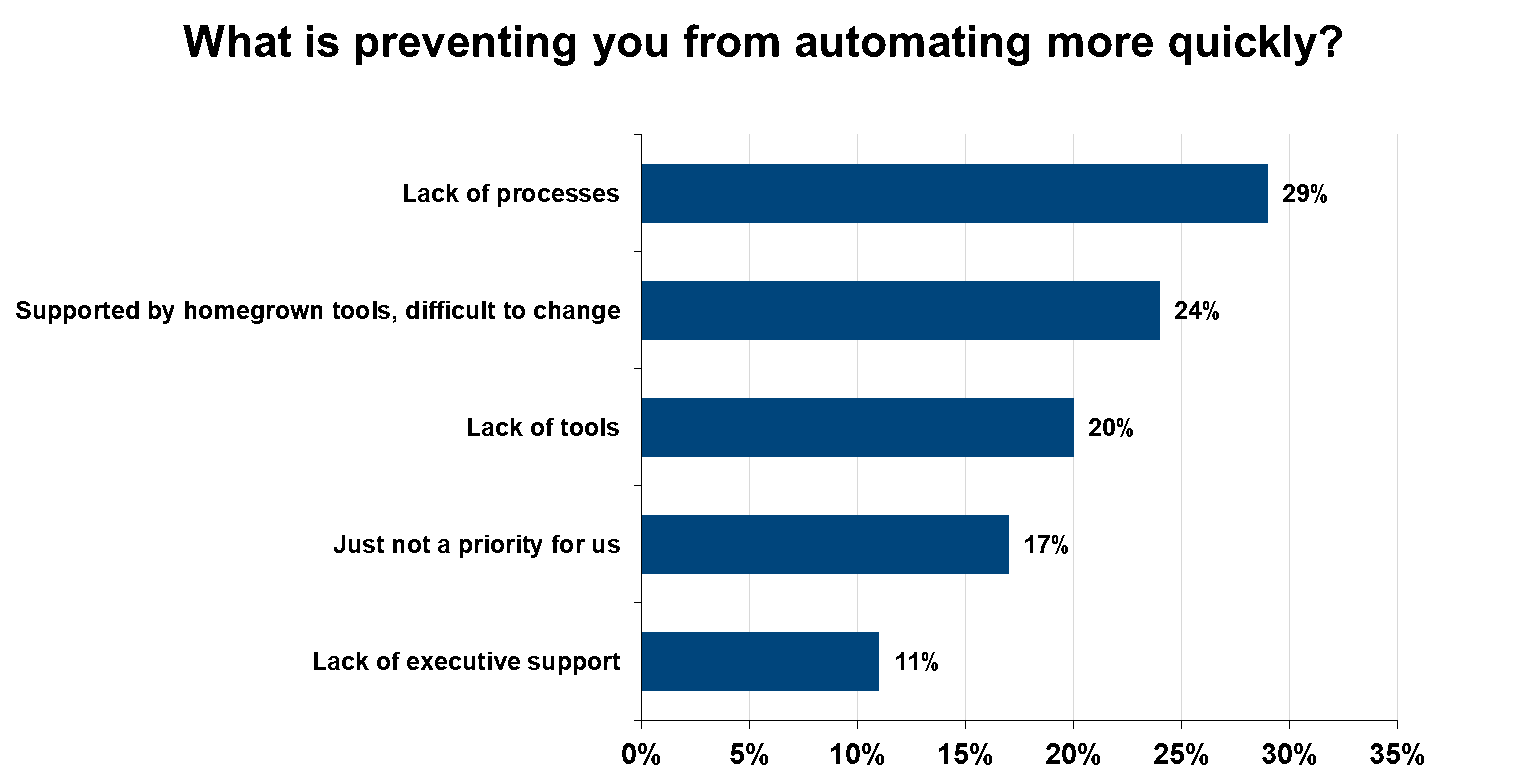Redefining IT Automation for Digital Business Success
Dan Twing, President and COO of Enterprise Management Associates (EMA), discusses the growing need for IT Automation to achieve digital business success.

Most businesses today are impacted by digitalization. Customers, trading partners, and employees want easy electronic communications, fast response, flexibility, and real-time information. However, to be truly positioned for digital business success, an organization must transform not only its business processes, but its underlying IT infrastructure as well. Digital business requires speed, agility, and strategy. Teams burdened with disconnected legacy tools and pockets of uncoordinated automation struggle to achieve speed and agility, and they lack the time for strategizing.

One thing is for sure: status quo operations will hold a business back. Many organizations have no overarching enterprise automation strategy. They operate with outdated tools, a collection of scripts, and stale information. EMA research shows that 79 percent of organizations still rely on scripts for certain workloads. Reasons for not automating more quickly include the lack of processes, use of homegrown tools, lack of tools, automation not being a priority, and lack of executive support. This is not sustainable.

An intelligent IT automation strategy starts with a new mindset about the role of automation in the organization. Automation should be coordinated with an overall view of automation functions that span operations, development, and business functions. Self-service interfaces, DevOps empowering APIs, and reusable objects deliver speed and agility.
Automation can lead to cost savings, but this is no longer the primary objective. Automation is necessary just to keep pace with the speed of modern business. Automation also opens up new possibilities. These can be new ways to interact with and delight customers. It can be new forms of information sharing with trading partners by integrating systems to provide real-time, seamless information between multiple companies. New products or highly customized products can be offered. Freed from repetitive manual tasks and empowered with visibility, IT and business staff can turn their attention to strategically applying digitalization to the business.
EMA believes the following three keys are essential to redefine IT automation for digital business success
- If it can be automated, it should be automated.
- Coordinate control on an enterprise-class automation solution.
- Embrace speed of change and harness the power of predictive analytics.
It starts by moving beyond homegrown tools and scripts and empowering employees with an enterprise-class automation solution. Such tools can bring significant capabilities including workflow design and optimization tools, a library of out-of-the-box building blocks, event triggers, auto-remediation features, and improved handling and control of file transfers, just to name a few. These tools improve productivity, reusability, and scalability. They allow staff to go faster with confidence.
It is time to take a look around your organization and consider whether you are automating everything that could be automated. Consider the possibilities if more manual processes were automated and your infrastructure was ready to support multiple digitalization initiatives. Consider what your competition is doing to outrun you with their own digitalization efforts. Maybe it is time to consider upgrading your tools to empower your team with an automation strategy.
Interested in learning more? Watch the full webinar “3 Essential Keys to Redefining IT Automation for Digital Business Success” with Dan Twing, President of EMA and Ben Rosenberg, President of Advanced Systems Concepts, Inc.:







